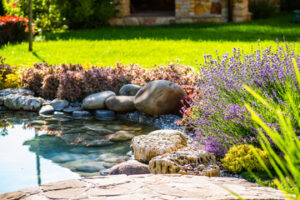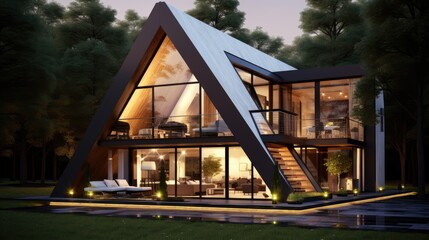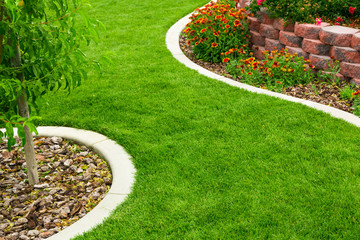How Landscaping Design Combines Nature and Culture
Creating a beautiful landscape is a unique art form that combines nature and culture. Architects, gardeners, and designers come together to create a space that is functional and harmonious. Need an expert to do the job? Contact Eco-Green Landscaping Anaheim for more details.

Having a good understanding of design composition is crucial to creating a successful landscape. This includes identifying and utilizing five basic elements of design: proportion, form, color, line, and rhythm.
Proportion is the size and relationship of a feature in a landscape. It also extends to the areas that are planted and the horizontal relationships between the features.
The purpose of proportion in design is to balance the mass of objects in a landscape. For instance, a grass garden with plants of varying heights will be more visually appealing than a single tall plant.
The visual quality of a form is important to evoke various emotions. For instance, circular shapes can be stretched into ovals or half circles, and a curved line can move the eye at a slower pace than a straight one.
The form is used in landscaping design to help define hardscape features such as beds and walkways. Often, these shapes are repeated to create a rhythm. In addition, these elements can be repeated to emphasize a focal point in a landscape.
Forms in landscapes can be as subtle or as complex as the designer desires. In many cases, the most popular landscape design forms are curvilinear. These are formed by combining subtle guidelines with a series of objects.
Repetition can be simple, such as using the same object in a line, or more complex, such as using the same texture throughout a landscape. Repetition is an excellent design method for designers with difficult terrain.
Rhythm in landscape design is the sequence of movements that are created through the strategic placement of elements in a garden. The use of this concept can add vitality and a sense of flow to a garden.
Rhythm can be achieved by repeating architectural forms, textures, or colors. Rhythmic elements can also be introduced by grouping plant forms, architecture, or hardscape material.
The use of repetition is the most effective way to establish a rhythm in a designed space. This can be achieved through simple elements such as regularly spaced trees or garden lines.
To achieve a more complex rhythm, staggered spacing between a series of clustered steps can be used. This allows the viewer to perceive a change in pace as they walk.
In addition to rhythmic elements, repetition can also be used to provide structure. The pattern can be repeated in order to create a background, draw attention to an area, or emphasize a line.
Anja Maubach uses spaces to jazz up a generic path. She uses concrete pavers and densely planted sedums in her designs.
Another method of creating a sense of rhythm in a garden is to change the color of the planting bed. This can be done gradually. The change in color can be influenced by the sun and the shade.
Lastly, a design that consists of asymmetrical balance can create a free-flowing, informal landscape. An asymmetrical design can also be created by arranging physical elements around a discrete line of symmetry.
Using the right scale in landscaping design can pay off big time. A properly scaled flower bed can give you the garden of your dreams. In addition, you can create a functional outdoor room if you plan ahead.
The best way to master this art is to start by getting a scale ruler. You will be surprised at the results. In most cases, you will need to mark the scale you wish to use on the ruler itself. This can help you keep track of what you have accomplished and what you have left to do.
A great rule of thumb to follow is that shrubs and trees near the house should be no more than three times the height of the house. Likewise, trees that are further away should be no more than twice the height of the house.
If you are fortunate enough to have a large home, there are ways to make your place seem larger than it really is. One of the more effective methods is to use tall narrow trees to relate to the height of the house. This can have a dramatic effect on the overall feel of your landscape.
There are many more subtle ways to use scale in your landscape design, but the above-mentioned ones should be considered the foundation of your next design project. In addition, you might want to think of the best use of space for your design before you actually start your garden.




